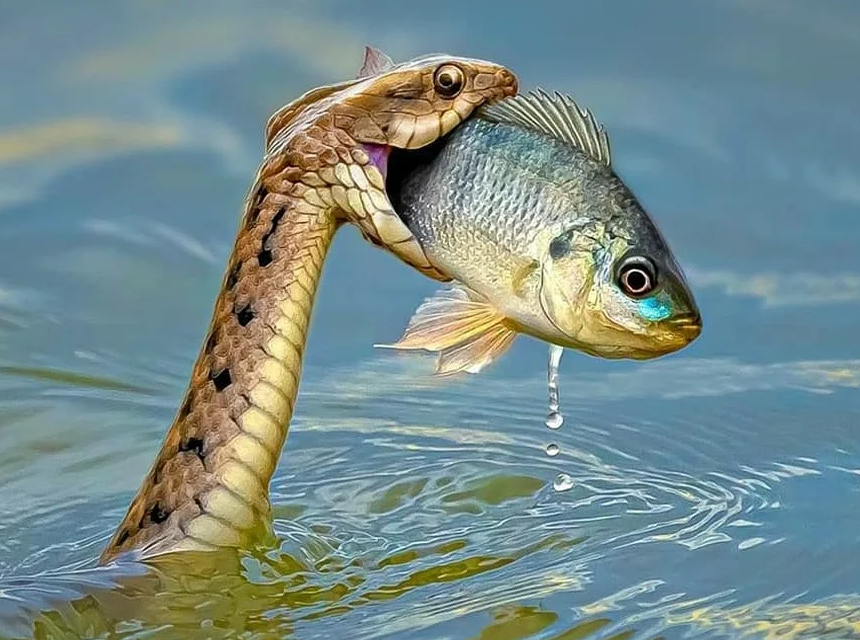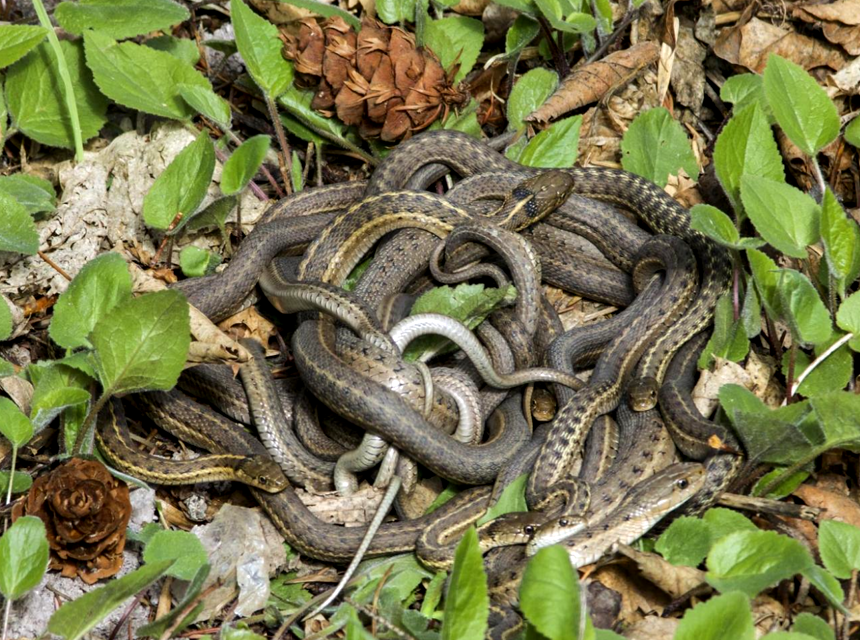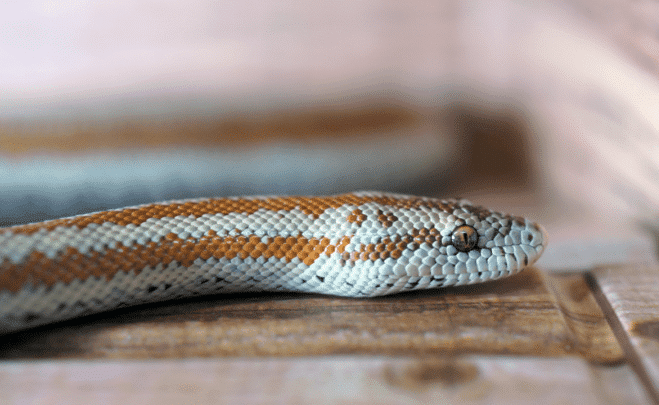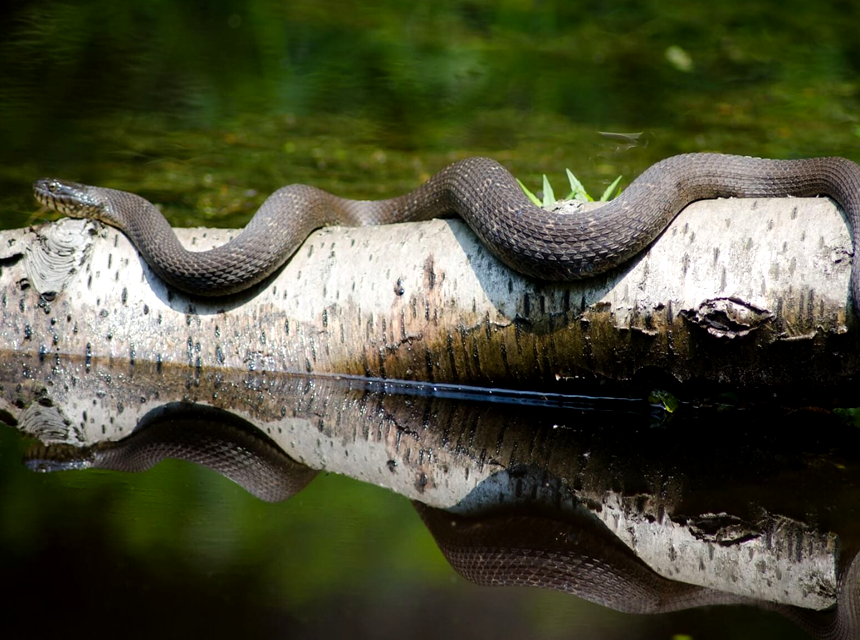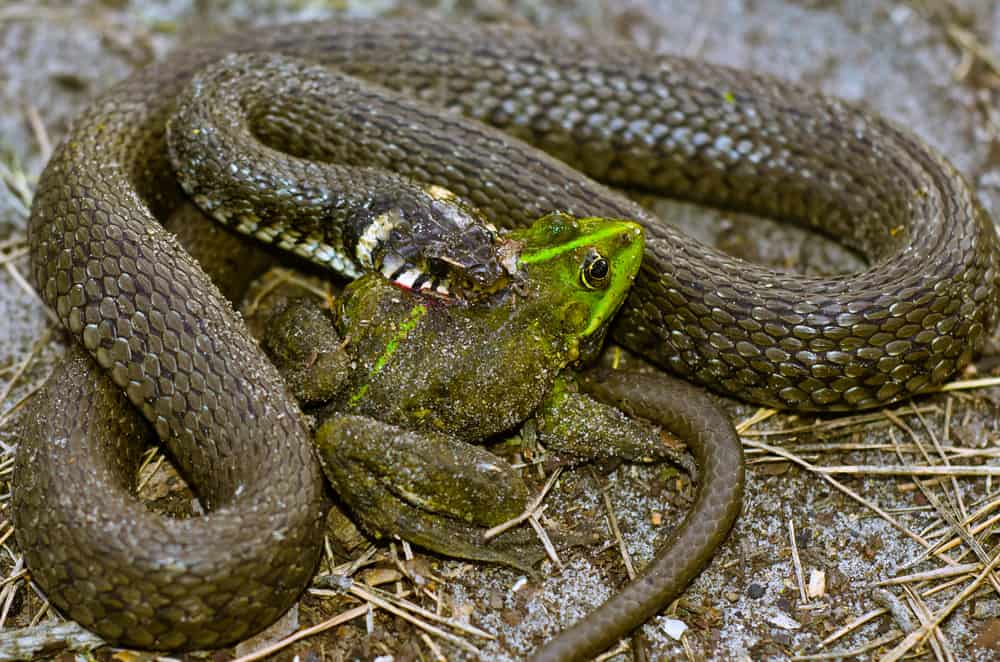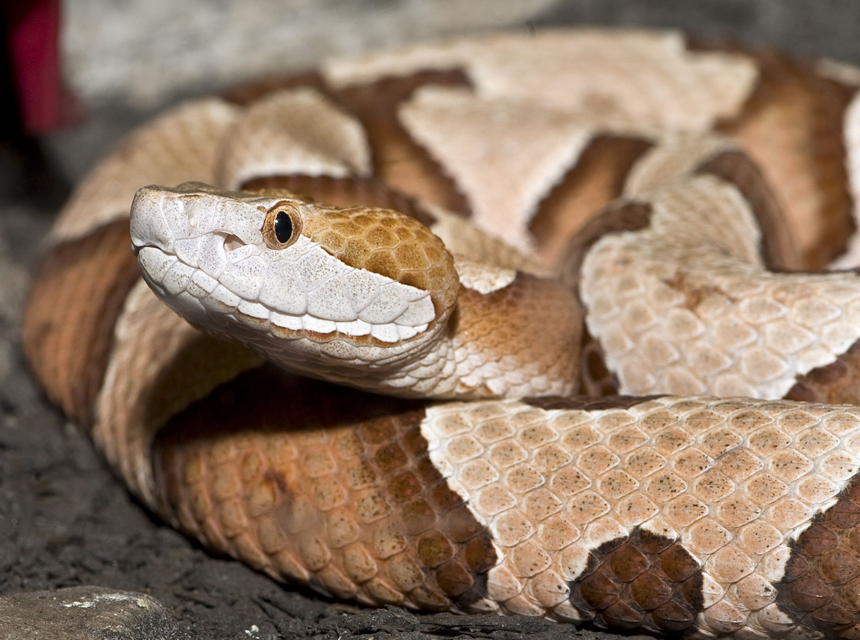

In addition to having refined motor control that allows them to move in various ways on different surfaces, snakes can also survive without food for an extended period. So, how long can snakes go without eating? Snakes regulate their metabolism to match their living conditions and the available resources, and they can go without eating for weeks or months before using their stored fat for energy.
The age, size and species of the snake may affect its appetite. The time of the year as well as breeding and shedding seasons will also determine the rate of a snake’s metabolism. We have discussed various types of snakes and their diet and appetite so you can learn more about how long snakes can survive without food.
Most pet snake owners prefer smaller species that can fit in minimal spaces that are also easy to clean and manage. Smaller snakes also make great pet snakes because they are less intimidating and easier to handle.
Some of the popular pet snakes include rosy boa, corn snake and ball python. Depending on their age and size, pet snakes feed on frozen rats, mice, birds or insects.
How long can pet snakes go without eating? That will mostly depend on the type of snake because some require weekly feeding while you can feed others after every two weeks. You may use one frozen animal for a weekly feeding schedule or two frozen animals to feed your pet snake after a period of two weeks.
Since they are ectothermic, pet snakes cannot last for 14 days without water and the correct temperature because they rely on heat from the environment, according to the University of Melbourne’s School of Biomedical Sciences. However, they can survive for that period of time without eating because they require less energy. They can therefore lower their metabolism and later use their fat reserves as fuel.
Despite the extended time that pet snakes can go without eating, we do not advise you to prolong this period beyond two weeks; once the snake has used the stored fat as fuel, it will start breaking down its muscles such as the heart muscles that maintain the organs, and this can lead death.
Below we will explain how long different pet snakes can go without eating since the size and frequency of feeding varies according to the species and life stage of the snake.
| Snake type | Lives without food | Feeding requirements |
| Ball python | 6 months min. | Once in 7-14 days for adult, twice a week for juvenile |
| California kingsnake | 6 months max. | Once in 10-14 days for adult, once in 5-7 days for the first year of life |
| Cape house | Few weeks max. | Once a week |
| Carpet python | Few months max. | Once in 7-10 days |
| Children’s python | Few weeks max. | Once in 7-10 days |
| Corn snake | 2 weeks max. | Once in 7-10 days |
| Garter snake | 3 months max. | Once a week for adult, once in couple of days for juvenile |
| Kenyan sand boa | 1 year max. | Once a week |
| Milk snake | 6 weeks max. | Once in 7-14 days for adult, once a week for juvenile |
| Rosy boa | 2 weeks max. | Once in 7-10 days |
| Rough green snake | Few weeks max. | 2-3 times a week |
| Smooth green snake | Few weeks max. | Once or twice per week |
| Western hognose snake | 3 months max | Once a week for adult, every 5 days for juvenile |
Ball python
Ball pythons are fussy eaters that are known to refuse food and go on lengthy fasts that last for several months, especially during the breeding and shedding cycles. They can last for a minimum of six months without food because they can reduce their metabolic rate by up to 70% to use less energy
You should feed an adult ball python one full meal after every 7 to 14 days and a juvenile twice a week since the younger snakes have less stored fat to sustain them for many months without eating. The mice should be approximately 1.25 times as large as the width of the snake’s midsection. You could whet the appetite of a ball python by ensuring that the prey is warm, wet or covered in bloods so there is little chance of the snake refusing food.
California king snake
How long can king snakes go without eating? The California king snake can survive without food for up to six months. Babies require feeding once in 5 to 7 days and adults should feed once in 10 to 14 days.
You will find California king snakes, ranging from 91 to 106 cm in length, in California as well as in Nevada and Arizona.
In the wild, king snakes eat lizards, rodents, frogs and other snakes because they are ophiophagus, a genus of reptiles that feeds on other snakes. Your pet California king snake should eat rodents that might include a sprinkle of calcium or vitamin supplement. After feeding it, wait for at least 48 hours before handling the snake to prevent it from vomiting.
Cape house
Cape house snakes are sexually dimorphic species with the adult females considerably larger than the adult males; the adult males are about 18 to 24 inches and the adult females are about 32 inches.
This is a non-venomous snake. It mainly feeds on rodents and is native to South Africa, Zambia, Botswana, Zimbabwe, and Mozambique. However, it would not hurt to look for a snake bite proof gaiter like Crackshot Snake Guardz if you live in an area with different types of snakes. It features ultra-lightweight fabric with water-repellent coating that will prevent venom from seeping through the material to your skin.
The ones that live in the wild breed once or twice a year while Cape house snakes kept as pets lays 5 to 16 eggs every two months, breeding up to 6 times in a year.
The recommended feeding schedule for a cape house snake is once per week because it can only survive without eating for only a few weeks.
Carpet python
Carpet pythons live in a range of habitats in Australia and New Guinea. The Queensland’s Department of Health and Sciences reports that carpet pythons eat lizards, possums, rats and birds.
Carpet pythons should be fed once in every 7 to 10 days. They have a feeding requirement that is similar to that of Cape house snakes but a carpet python can go without eating for a few months while the latter can only survive for a few weeks without food.
Children’s python
How long can baby snakes go without eating? Children’s python should eat one meal in 7 to 10 days, and they can last for a maximum of a few weeks before resuming eating.
Corn snake
Brumation refers to a dormant period akin to hibernation. During this period, snakes stop eating and their bodies shut down as their digestion and respiratory system slows down. A corn snake in brumation can last for 2 to 3 months without eating since it can conserve energy during this period. Otherwise, it can go without eating for only a maximum of two weeks.
As with many other smaller snakes, the correct feeding schedule for a corn snake is one meal every 7 to 10 days.
Garter snake
Garter snakes prefer living near sources of water where they can easily find amphibians for food. They also feed on lizards, earthworms and rodents.
Garter snakes can go without eating for 2 to 3 months. Their ideal feeding frequency is a meal every couple of days for young ones and one meal per week for an adult garner snake.
Kenyan sand boa
The Kenyan sand boa can endure without food for a maximum of one year. This is impressive compared to how long garter snakes can go without eating. The females are larger than the males and they typically feed more. You should feed your Kenyan sand boa once a week although its appetite might decrease during breeding season or if the snake is stressed which is common in this type of snake than in other boas.
Milk snake
Milk snakes should feed once a week for juveniles and once in every 7 to 14 days for adults.
Milk snakes are adaptable, grow up to 4 feet in length and they have a docile disposition that makes them a favorite with pet snake owners. So, how long can these pet snakes go without eating? Their timeline is relatively short as they can only survive for a maximum of 6 weeks without food.
Rosy boa
Rosy boa and Rubber Boa are the two boas in the United States. The Rosy boa is gentle, small in size and requires feeding every 7 to 10 days. Rosy boas can go without eating for up to 2 weeks.
Rough green snake
Unlike other pet species that eat rodents, rough green snakes are arboreal serpents that are mainly insectivores that eat worms and insects such as grasshoppers, crickets, spiders, moths, or caterpillars. You should feed a rough green snake this diet 2 to 3 times a week although it can go without eating for a few weeks.
Smooth green snake
The smooth green snake can also go without eating for a few weeks and should be fed once or twice per week.
Rough and smooth green snakes are both native to North America and they have a similar appearance characterized by an emerald-green color with a cream or pale yellow belly. Both species require frequent feeding and you should provide them with a meal that they can consume in about 20 minutes.
Western hognose snake
Western hognose snakes are great pets that are less fussy eaters than ball pythons. Their diet includes lizards, toads, frogs and mice, and they have a huge appetite for rodents in particular.
An adult western hognose snake requires one meal weekly while the juvenile ones need to be fed after every 5 days. This type of snake can go without eating for a maximum of 3 months.
There is not much difference between the diet of baby snakes and their parents. They eat the same food such as amphibians, insects and rodents as their adult counterparts, but in a smaller size.
Baby snakes can survive without food for up to a week. If you are wondering why baby snakes cannot go for long periods without eating, we will explain it to you.
The first reason is their age. Baby snakes need to eat frequently because they need more nutrition for their growth and development. Secondly, snakes take more time to digest food because they swallow it whole. The small size of baby snakes means they need to eat small portions frequently unlike adult snakes that eat a large prey that would take a long time to digest, and therefore require a longer period between meals.
Lastly, species also play a role in their appetite that necessitates eating twice or thrice per week.
Most pet baby snakes are fed pinkie mice or newborn mice, eggs, mealworms or small crickets. You should avoid feeding your baby snake live rats or mice that might attack them as they fight back, causing injuries that lead to mouth rot.
How long can rat snakes go without eating? Does a wild snake survive longer than a pet snake without food? There is a significant difference between the needs of a pet snake and a wild snake, and these differences are reflected in their survival rate.
A wild snake eats more kinds of food but since food is not always readily available, wild snakes evolve and adjust their appetite to the amount of food available. Consequently, wild snakes can go without eating for a longer period regardless of circumstances because they are more adaptable to scarce resources. Brumation lowers their metabolism and conserve energy to allow them to survive in winter.
Generally, a snake can go without food for up to two months before it needs to burn its fat reserves for energy. That being said, there are larger species that can survive without starving for several months or years.
| Snake type | Lives without food | Feeding requirements |
| Anaconda | 2 years max | 4-5 times a year |
| Boa constrictor | Several months max. | Once in 10-14 days |
| Copperhead | All winter | Once in 3 weeks in summer |
| Eastern diamondback rattlesnake | 6 months min. | Once in 2 weeks |
| Mojave rattlesnake | Several weeks max. | Once in 1-2 weeks |
| Python | 6 months min. | Once every 1-2 weeks for adults, twice a week for juvenile |
| Rat snake | 6 months min. | Once in 7-10 days |
| Water moccasin (cottonmouth) | Several weeks max. | Irregular |
| Western diamondback rattlesnake | 6 months min. | Once in 2-3 weeks |
| Western rattlesnake (prairie) | 6 months min. | Once in 2-3 weeks |
Let us look at some of the common species of wild snakes and their survival rate without food.
Anaconda
The anaconda is spectacular; it is the second longest snake in the world and the largest by weight. Apart from that, it has outstanding feeding requirement of 4 to 5 times in a year and can go without eating for up to 2 years. Anacondas digest their food for 3 to 4 months, thus the minimal feeding schedule compared to how long pet snakes can go without eating.
Baby anacondas eat birds, fish and small mammals while adults feed on deer, caimans, large birds and capybara. The females are larger than the males and would sometimes cannibalize them during breeding season. The anacondas at the Smithsonian’s National Zoo eat rabbits and rats once a month.
Boa constrictor
A boa constrictor feeds on opossums, lizards, rats, mongooses, bats, and birds. It requires eating once in every 10 to 14 days but can survive without food for several months.
Copperhead
Copperheads hunt prey and subdue it before they swallow it whole. Their ideal feeding requirement is a single meal every three weeks during summer. They hibernate in their dens and go without eating all winter.
Eastern diamondback rattlesnake
This is a species of snake that can go without eating for a minimum of 6 months. Otherwise, it requires feeding once in every 2 weeks.
Mojave rattlesnakes
Mojave rattlesnakes feed once a week or after every two weeks. Their diet mainly consists of birds, rodents, rabbits, toads, and lizards.
The nocturnal predators can survive without food for several weeks.
Python
A python is yet another snake with a feeding requirement of one meal after every 1 to weeks. Baby pythons need to eat twice a week.
Pythons are among the snake species that can go without eating for a long time; at least 6 months.
Rat snake
Rat snakes are medium to large in size, and this might account for the long period they can go without food. Although a rat snake needs to feed once every 7 to 10 days, it can go for a minimum of 6 months without eating.
Wild snakes have different coping skills to survive starvation. A rat snake will break down proteins once it depletes all its fat reserves to survive starvation, and other species will enlarge their head to accommodate a wider variety of food or digest their hearts to get more energy after exhausting the stored fat.
Water moccasin (cottonmouth)
A water moccasin (cottonmouth) can go without eating for several weeks but we cannot specify how often it should feed due to its irregularity. The opportunistic predators feed on terrestrial and aquatic prey that include amphibians, fish, birds, turtles, lizards, baby alligators, and snakes, including their own species.
When discussing how long king snakes go without eating, we mentioned that they also eat other snakes. The snakes they eat include the highly venomous cottonmouths so you could use king snakes to get rid of cottonmouths. We also recommend getting the best snake gaiters made of sturdy material to maximize your protection against snake bites.
Western diamondback rattlesnake
A Western diamondback rattlesnake should be fed once in every 2 to 3 weeks. As is the case with a rat snake, this type of snake can go without eating for a minimum of 6 months.
Western rattlesnake (prairie)
The Western rattlesnake (prairie) is common in North America and the Western diamondback rattlesnake is common in southwestern United States and the one responsible for most of the venomous snake bites in the United States. You can protect yourself from poisonous snake bites with ForEverlast Snake Guards that is available as one-size-fits-all with adjustable Velcro straps.
The two rattlesnake species share a similar diet and have the same dietary requirement and survival rate; they eat a single meal in every 2 to 3 weeks and can survive without eating for a minimum of 6 months.
You can use different factors to determine how long a specific type of snake can go without eating. We have covered them in the next section.
Baby snakes cannot go for long without eating because they have a higher metabolism that requires them to eat more often to accommodate their rapid growth. Aside from that, some types of hatchlings go through brumation before they start eating. On the other hand, many adult snakes require a single meal every 1 to 2 weeks since they take longer to digest.
The type and size of a snake varies from one species to another and it influences how long snakes can go without eating. Smaller snakes with high metabolism have greater appetite and require frequent feeding whereas larger snake species such as pythons only need a large meal monthly.
Depending on the season of the year, snakes will eat less or avoid eating as they undergo brumation to slow their metabolism and increase their rate of survival. This usually occurs during the winter season when potential prey is also scarce.
We see most people searching for the best snake traps during warmer times of the year when both snakes and their prey are more active. Snake activity also increases in late summer and early autumn as temperatures fall before the snakes undergo brumation. Around this time, the snakes can move around when there are less likely to overheat or dehydrate.
Research on female royal pythons indicates that they may cease to feed during hatching. Many female snakes will stop eating when breeding and male snakes may also stop eating around ovulating females.
This is more apparent among wild snakes that are better equipped to survive harsh natural conditions. As stated earlier while explaining how long pet snakes can go without eating, different species have different methods of adapting to limited food resources.
Some snakes will digest their heart or digestive system or expand their heads.
Shedding skin decreases the appetite of snakes and it will eat little to no food during this process known as ecdysis that takes place 4 to 12 times in a year.
One of the most overlooked aspects that could be making your pet snake feed less than the recommended period is the immediate environment. Read on to learn how the living conditions can affect a snake’s appetite and how you can improve them.
Since snakes thrive in a humid and warm environment, a dehumidifier is one of the natural means to get rid of snakes in your home or yard. You can choose the best snake repellents or lower the humidity levels to create a hostile habitat for snakes.
However, if you are a pet snake enthusiast, you will need to ensure that the humidity levels are not too high or too low because it can lead to loss of appetite, skin disorders and respiratory diseases for your snake.
A snake can go for long without eating but stress is one of the main reasons that a snake may refuse food.
A snake may be stressed by a new environment, insecurity, loud noises, irregular feeding schedule, excessive handling, and change in lighting and temperature
Snakes are cold-blooded animals that favor warm and humid conditions because they generate heat from their surroundings. You should keep consistent temperature of 70°F to 85°F to maintain optimal conditions for your pet snake.
Bacteria thrive in the same kind of habitat that snakes love. Keep the snake in a clean enclosure that you sanitize after every 2 to 3 months to avoid health issues such as mites or blisters from moldy and dirty conditions.
Corn snakes, milk snakes and other pet snakes can go without eating for several weeks or months by regulating their metabolism rate.
Species, age and size are the ones that determine how long a snake can go without eating. However, wild snakes can last much longer without food because they have high adaptability mechanisms that allow them to survive in the wild even when there are limited sources of food. Pet snakes also tend to be smaller in size and a smaller snake cannot survive for long without resuming eating.
Although snakes are adept at reducing their energy expenditure and metabolic rate, they might die after breaking down some of their vital organs. Diseases or poor living conditions such as inadequate heat source may also cause snakes to starve themselves to death as they refuse to eat.
Your pet snake may refuse to eat due to the following reasons:
Respiratory infections such as pneumonia may make a snake refuse food.
Infectious stomatitis refers to mouth rot caused by bacteria in snakes with a weak immune system. The infection is common in other reptiles as well.
Ectoparasites and intestinal parasites in large numbers can make a pet snake reluctant to eat. Identifying them is solving half of the problem. Check with your local vet who specializes in reptilian to get a fast treatment.
Most animals and human beings cannot live for a long time without food. However, snakes use different ways to survive food shortage for prolonged periods.
How long can snakes go without eating? Well, a royal python holds the record for living without food for more than two years. Snakes continue to amaze us with their adaptability and longevity by surviving without eating for several months or years, depending on the size, age and species of the snake as well as their stage in life. For instance, snakes tend to eat less or not eat at all when they are shedding, breeding or in brumation, especially during colder seasons.
